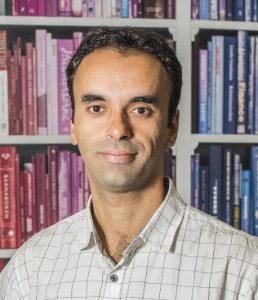Paulo Canas Rodrigues

Paulo Canas Rodrigues is a Professor of Statistics at the Federal University of Bahia and the Head & Principal Investigator of the Statistical Learning Laboratory (SaLLy). He completed his Ph.D. in Statistics at the Nova University of Lisbon, Portugal (2012), and his Aggregation (Habilitation) in Mathematics, specialization in Statistics and Stochastic Processes, at the Lisbon University, Portugal (2019). His research in statistical learning, statistics, and data science resulted in more than 80 scientific papers in collaboration with 126 co-authors from 61 universities in 24 countries and delivered more than 130 invited talks and seminars. He was Vice-President of the International Association for Business and Industrial Statistics (ISBIS) between 2009 and 2013, President of the Brazilian Region of the International Biometric Society (2018-2020; 2020-2022), founder and Chairman of the Latin American Regional Section of the International Association for Statistical Computing between 2017 and 2019, and the Chair of the Special Interest Group on Data Science of the International Statistical Institute between 2021 and 2023. He co-founded the Latin American Conference on Statistical Computing (LACSC) and the Conference on Statistics and Data Science (CSDS). Among other activities, he is currently the President of the International Association for Business and Industrial Statistics (ISBIS), President-Elect of the International Association for Statistical Computing, Member of the Representative Council of the International Biometric Society, and a member of the Board of Directors of the Brazilian Statistical Association. Website: www.paulocanas.org; www.SaLLy.ufba.br.
Spatio-temporal modelling of the Brazilian wildfires: The influence of human and meteorological variables
Abstract: Wildfires are one of the most common natural disasters in many world regions and actively impact life quality. These events have become frequent with the increasing effect of climate change and other local policies and human behaviour. This study considers the historical data with the geographical locations of all the “fire spots” detected by the reference satellites that cover the whole Brazilian territory between January 2011 and December 2020, comprising more than 1.8 million fire spots. This data was modelled with a spatial econometric model using meteorological variables (precipitation, air temperature, humidity, and wind speed) and a human variable (land-use transition and occupation) as covariates. We find that the change in land use from forest and green areas to farming has a significant positive impact on the number of fire spots for all six Brazilian biomes.